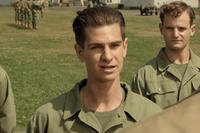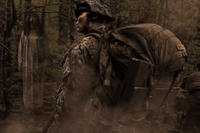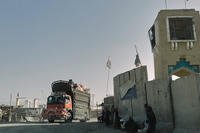Had the popular press not frightened its readers with tales of Indian terror, had Sitting Bull not been killed, had hungover and frightened soldiers not become trigger-happy on that sad day in 1890, history might have remembered Maj. Gen. James W. Forsyth as one of our finest military leaders.
The 1856 West Point graduate commanded with distinction for the Union during the Civil War. In 1864, he became Gen. Philip Sheridan's chief of staff; after several more assignments, Forsyth was given first a colonel's and then a general's brevet. He was promoted to brigadier general in 1894 and retired in May 1897. His career could have been deemed distinguished.
But on Dec. 29, 1890, troops under then-Col. Forsyth's command were ordered to aim their guns on Wounded Knee village in Pine Ridge, S.D. Led by Big Foot, the group of Hunkpapa and Miniconjou Sioux were heading toward the badlands of South Dakota after the Dec. 15 murder of Sitting Bull. From the Pine Ridge agency came reports: "Indians are ... wild and crazy ... We need protection and we need it now ..." On Nov. 20, Chicago Daily Tribune headlines read: "In A State of Terror ... Indians Dancing With Guns ... Fighting Expected at Any Moment."
Meanwhile, smaller local papers reported that their area was "a peaceful, orderly, well-behaved place." "There never was any danger of an Indian outbreak, and none exists now, unless these silly sensational reports have seared people into acts that might be construed by the Indians as a desire to fight," wrote Charles Moody, editor of the Sturgis, S.D., Weekly Record.
One such act unquestionably was Gen. Nelson A. Miles' orders to Forsyth on Dec. 28: "Disarm the Indians. Take every precaution to prevent their escape. If they choose to fight, destroy them."
Forsyth followed those orders. On Dec. 28, his 7th U.S. Cavalry disarmed and arrested 120 Sioux men and 230 of their women and children. No one knows for sure who fired the first shot, but once the massacre began, the U.S. soldiers' Hotchkiss guns rained shells into the village at the rate of 200 rounds a minute. The "battle" was quickly over and has been widely termed "the last Indian battle." Although not chronologically last, Wounded Knee symbolized the death of a people's dream to remain free.
At the time, Forsyth and his men were lauded. Yet their fame miserably failed the test of time, and today, Forsyth's name remains little known -- except by American Indians.
Want to Know More About the Military?
Be sure to get the latest news about the U.S. military, as well as critical info about how to join and all the benefits of service. Subscribe to Military.com and receive customized updates delivered straight to your inbox.















